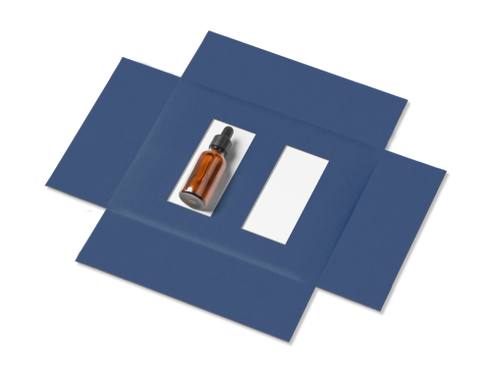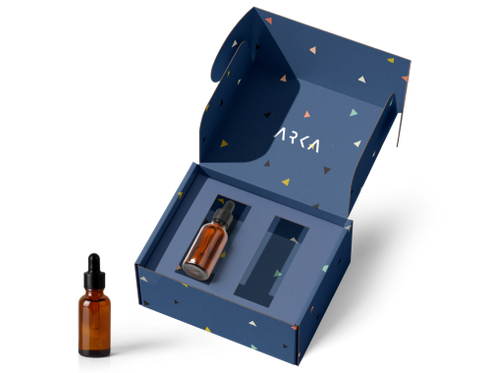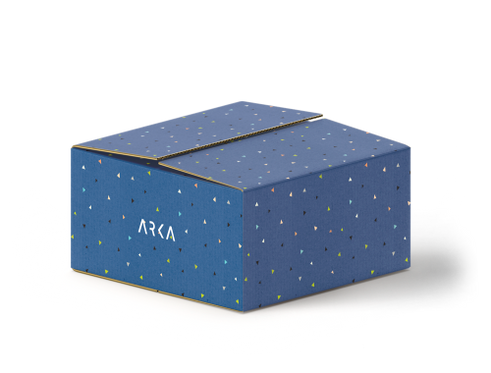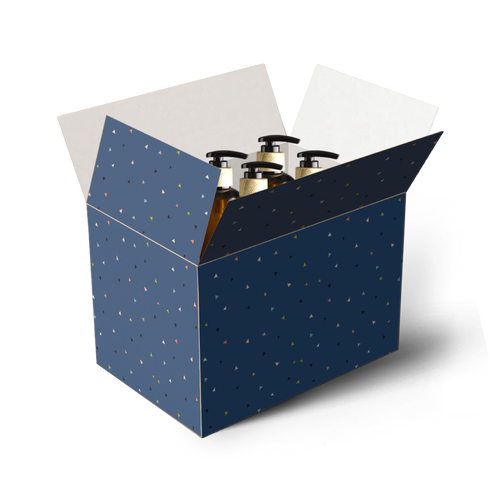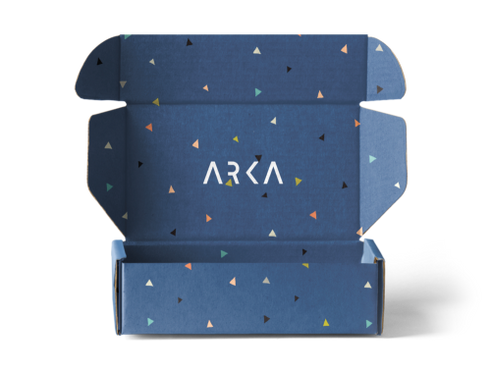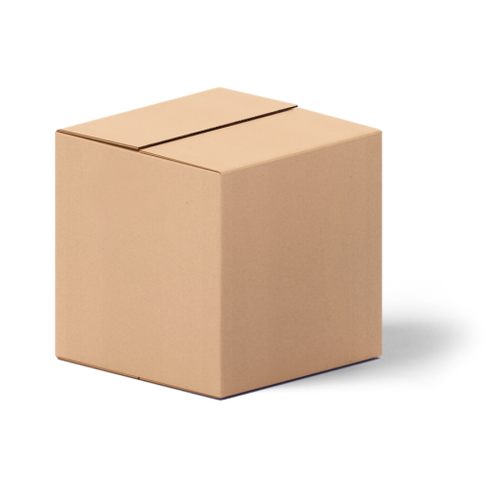Packaging 101: The Complete Guide
- Packaging 101
- Types of Packaging
- Aseptic Packaging
- Blister Packaging
- Biodegradable Packaging
- Bulk Packaging
- Carbon Neutral Packaging
- Circular Packaging
- Clamshell Packaging
- Compostable Packaging
- Cornstarch Packaging
- Corrugated Packaging
- Discreet Packaging
- Ecommerce Packaging
- Flexible Packaging
- Frustration Free Packaging
- Retail Packaging
- Secondary Packaging
- Smart Packaging
- Sustainable Packaging
- What is a PR Package?
- What is a Poly Mailer?
- Packaging Design Ideas
- AI Packaging Design
- Bakery Packaging Ideas
- Bath Bomb Packaging Ideas
- Bath Salt Packaging Ideas
- Body Butter Packaging Ideas
- Body Oil Packaging Ideas
- Body Scrub Packaging Ideas
- Brownie Packaging Ideas
- Cake Packaging Ideas
- Cake Pop Packaging Ideas
- Candle Packaging Ideas
- Candy Packaging Ideas
- Canva Packaging Design
- Chocolate Packaging Ideas
- Cinnamon Roll Packaging Ideas
- Clothing Packaging Ideas
- Coaster Packaging Ideas
- Coffee Bag Design Ideas
- Cookie Packaging Ideas
- Cosmetics Packaging Design
- Cotton Candy Packaging Ideas
- Cupcake Packaging Ideas
- DIY Packaging Ideas
- Dog Treat Packaging Ideas
- Food Packaging Ideas
- Empanada Packaging Ideas
- Etsy Packaging Ideas
- French Fries Packaging Ideas
- Frozen Food Packaging Ideas
- Hair Extension Packaging Ideas
- Handbag Packaging Ideas
- Jewelry Packaging Ideas
- Keychain Packaging Ideas
- Lash Packaging Ideas
- Lip Gloss Packaging Ideas
- Macaron Packaging Ideas
- Minimalist Packaging Ideas
- Mug Packaging Ideas
- New Employee Welcome Kit Ideas
- Packaging Colors
- Packaging Inserts Ideas
- Packaging Logo Design
- Packaging Typography
- Perfume Box Design Ideas
- Pizza Box Design Ideas
- Popcorn Packaging Ideas
- Scarf Packaging Ideas
- Skincare Packaging Design Ideas
- Soap Packaging Ideas
- Sock Packaging Ideas
- Sticker Packaging Ideas
- Sunglass Packaging Ideas
- Sustainable Packaging Ideas
- Tea Packaging Ideas
- Wax Melt Packaging Ideas
- Weed Packaging Ideas
- T-Shirt Packaging Ideas
- Wine Packaging Design Ideas
- What is a Packaging Engineer?
- Types of Packaging Materials
- Chipboard vs Cardboard
- Compostable Packaging Materials
- Alternatives to Plastic Packaging
- Edible Packaging Materials
- Food Packaging Materials
- Are Poly Mailers Recyclable?
- How to Recycle Cardboard Boxes
- How to Recycle Packaging Materials
- Medical Device Packaging Materials
- Mono Material Packaging
- Pharmaceutical Packaging Materials
- Plastic Food Packaging
- Protective Packaging Materials
- Reusing Packaging Materials
- Types of Packaging Foam
- Void Fill Packaging
- What is Chipboard?
- What is Kraft Paper?
- Offset vs Digital Printing
- RGB vs CMYK Printing
- Screen Printing vs Digital Printing
- Screen Printing vs Sublimation
- What is a Dieline in Packaging?
- What is Die Cutting?
- What is Digital Printing?
- What is Flexographic Printing?
- What is Glassine Paper?
- What is Offset Printing?
- What is Spot UV Printing?
- Why is 300 DPI Good for Printing?
- How to Estimate Shipping Costs
- How to Pack Glass for Shipping
- How to Mail a Bubble Mailer
- How to Make a Shipping Label
- How To Measure Box Dimensions and Sizes
- How to Ship Alcohol
- How to Ship Artwork
- How to Ship Books
- How to Ship a Cake
- How to Ship Candles
- How to Ship Chocolate
- How to Ship Clothes
- How to Ship Cookies
- How to Ship Food
- How to Ship a Hat
- How to Ship Jewelry
- How to Ship a Laptop
- How to Ship Perfume
- How to Ship a PC
- How to Ship Perishable Food
- How to Ship Plants
- How to Ship Shoes
- How to Ship Vinyl Records
- Packaging Symbols
- Shipping Large Items
- What is a Delivery Exception?
- What is Shipping Insurance?
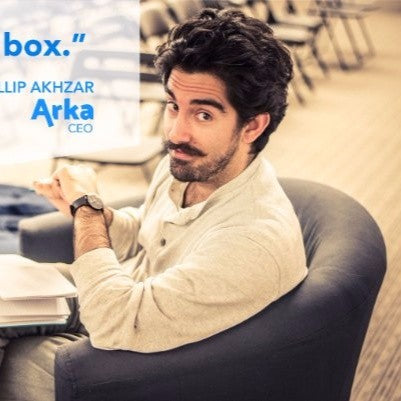
Discover Phillip Akhzar’s journey, the Founder and CEO of Arka, bringing 16 years of expertise in packaging and supply chain logistics. Read more on Arka.
Exploring Chipboard: Pros and Cons
When it comes to packaging materials, the debate between chipboard vs cardboard has been gaining momentum; Chipboard, often seen as the newcomer, is making waves in the industry for its unique set of advantages and drawbacks.
Pros of Chipboard
• Chipboard material, as an eco-conscious choice, is crafted from recycled paper and cardboard materials, making it a sustainable option for those seeking to reduce their environmental footprint.
• It provides a superb canvas for printing, delivering a consistently smooth surface that enhances the sharpness and vibrancy of your designs and labels.
• Chipboard is notably lightweight, which proves beneficial in applications requiring weight minimization, such as in the crafting of product packaging.

Cons of Chipboard
Despite its merits, chipboard exhibits reduced durability when compared to cardboard; It is less resilient to moisture and rough handling, which may limit its suitability for heavy-duty applications.
Applications of Chipboard in Industries
• Food Packaging: In the realm of food packaging materials, chipboard emerges as a stalwart guardian; It stands as a cornerstone in the industry, assuring the safety of delicate food items throughout their journey from production to consumer. These chipboard boxes promise safety and champion environmental causes through recyclability, preserving both products and the planet. At Arka, we also create custom food boxes for premium brands; let’s create your custom packaging today.
• Cosmetic Packaging: The glamorous world of cosmetics finds an ally in chipboard for its packaging needs. Fragile beauty products nestle within chipboard confines, ensuring they grace customers' hands in flawless glory. Its customizable nature allows for endless customization, transforming ordinary packages into visual tales that captivate consumers and boost brand allure. You can also check our premium custom cosmetic boxes that enhance brand awareness.

• Stationery and Office Supplies: Notebooks and folders owe their durability to Cardboard material, providing a sturdy canvas for your dreams and ideas; Chipboard's smooth surface promises enduring elegance, standing resilient against the wear and tear of daily life.
• Board Games and Puzzles: Its robustness and thickness make it the ultimate choice when it comes to crafting game boards and puzzle pieces. These components made from chipboard withstand the test of time and frequent handling, ensuring their longevity in the gaming universe. Chipboard's versatility weaves intricate designs, elevating the joy of gaming to unprecedented levels.
Unveiling Cardboard: Pros and Cons
The dilemma of cardboard vs chipboard frequently confronts businesses; each possesses its unique advantages and disadvantages, making it important to weigh the pros and cons before making a decision.
Pros of Cardboard
• Despite its apparent simplicity, cardboard boasts surprising durability; It can endure various handling and shipping procedures, assuring the safety of your products during transit.
• It is remarkably versatile; it can be easily cut, folded and shaped to match your product's specific dimensions. This flexibility enables tailored packaging solutions that meet your unique needs.
• Cardboard proves to be a pocket-friendly option; Its widespread availability makes it a cost-effective choice, particularly for small and medium-sized businesses.

Cons of Cardboard
Cardboard's drawback lies in its environmental impact. While it is recyclable, the production process can be resource-intensive. Additionally, the use of cardboard contributes to deforestation and greenhouse gas emissions.
Applications of Cardboard in Industries
• Electronics: Cardboard, with its shock-absorbing properties, safeguards delicate electronic parts during packaging. It shields electronic devices from static electricity during transport, acting as a reliable insulator.
• E-commerce and Shipping: Cardboard boxes, economical and sturdy, are favored by e-commerce for secure yet budget-friendly packaging.
• Moving and Storage: Cardboard boxes endure the stresses of moving, providing strong protection for belongings. Cardboard is recyclable, aligning with the eco-conscious approach to moving and storage.
• Furniture and Appliances: Cardboard safeguards furniture and appliances from scratches and damages during transit. Cardboard-based structures offer eco-friendly temporary furniture solutions, showcasing cardboard’s adaptability.
Chipboard vs. Cardboard: A Comparative Analysis
When it comes to packaging materials, chipboard vs cardboard stands out as a popular yet puzzling option for consumers. Let's explore a comparison between these two, considering vital factors to guide your choice.
• Strength and Durability: Cardboard, a thick paper pulp creation, offers moderate pressure resistance due to its sturdy nature; Chipboard, made from compressed paperboard, is denser and notably more robust. Chipboard excels in durability, ensuring your items remain secure during transportation.
• Customization Flexibility: Both chipboard and cardboard offer versatile customization, catering to diverse packaging needs. However, chipboard gains an advantage with its capability to accommodate intricate designs and cuts, making it perfect for specialized packaging solutions.

• Environmental Impact: In our environmentally conscious era, assessing the eco-friendliness of packaging materials is paramount; Cardboard, being biodegradable and recyclable, stands as an eco-friendly choice. Chipboard, derived from recycled paper fibers, also boasts impressive green credentials. Both materials aid in reducing the carbon footprint. Cardboard holds a slight edge due to its extensive recycling infrastructure.
• Cost Efficiency: Considering costs, cardboard generally proves more economical than chipboard. Its budget-friendly pricing appeals to businesses with financial constraints. Chipboard, while slightly more expensive, compensates with enhanced durability, potentially reducing long-term replacement expenses.
Selecting the Right Material: Chipboard or Cardboard?
In the realm of packaging, the choice of material holds immense power in ensuring your products reach their destination unscathed. Among the contenders, chipboard and cardboard stand tall: Understanding the differences between chipboard box vs cardboard can help you make an informed decision tailored to your specific packaging needs.
• Product Type: Consider what you're packaging; Chipboard crafted from pressed paperboard, suits lighter items like cosmetics or electronics, providing decent protection without bulk. Cardboard, being thicker and sturdier, shines when packaging delicate or heavy goods such as glassware or appliances. Its robust nature ensures top-notch protection while in transit.
• Budget: Chipboard generally costs less, making it a frugal choice for lightweight items. But, if your products are fragile or valuable, investing in cardboard pays off. Its durability minimizes potential damage, reducing the risks of returns and replacements, thus proving financially wise in the long run.

• Environmental Consciousness: Both chipboard and cardboard play their part in the environmental saga, being recyclable and biodegradable. However, if you prioritize eco-friendliness, cardboard takes the spotlight. Its higher fiber content eases recycling and gains favor from recycling facilities. Opting for cardboard aligns seamlessly with your green initiatives, ensuring your packaging journey leaves a minimal environmental footprint.
• Customization Needs: Customization transforms packaging into a unique unboxing adventure; both materials offer customization avenues like printing and embossing. Cardboard, with its smooth texture, excels in surface finish and print quality. Cardboard provides a superior canvas if your design demands intricate graphics or elaborate branding. Conversely, for basic needs, a budget-friendly chipboard might suffice.
Final Thoughts
The choice between chipboard vs cardboard largely depends on your specific needs. If you prioritize strength and durability, cardboard is your best bet. If customization options and environmental impact are key considerations, chipboard has the advantage, and if cost is a primary concern, chipboard offers a budget-friendly alternative.
Here at Arka, we craft custom packaging solutions just for you. We pick the ideal materials like strong chipboard or dependable cardboard to protect your products perfectly. We offer premium custom mailer boxes and retail boxes that help businesses boost their brand. Let’s create your ideal packaging together!
FAQs on Chipboard vs Cardboard
Can I print on chipboard as effectively as on cardboard?
Yes, both chipboard and cardboard can be printed on, but cardboard generally offers better quality due to its smoother surface.
Is chipboard more environmentally friendly than cardboard?
Both are eco-friendly, recyclable and biodegradable; However, cardboard is often easier to recycle due to its higher fiber content.
Is chipboard or cardboard best for shipping delicate items?
Cardboard is ideal; Its thickness and strength offer superior protection for delicate items during transit, making it the better choice. You can also use top-notch custom shipping boxes by Arka!

